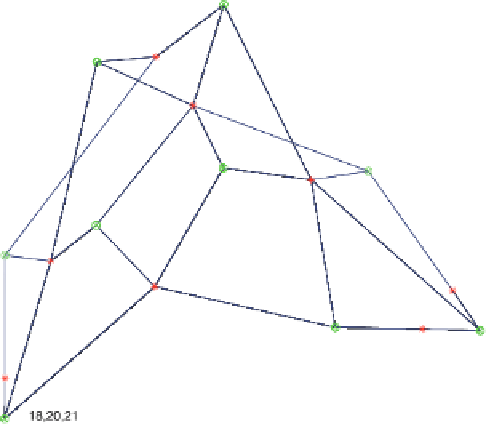Graphics Reference
In-Depth Information
the normalization constraint tothis setting, namely, Z
′
D
Z
Z
I
p
,gives the following
solution, which can be obtained through a block relaxation algorithm (Michailidis
and de Leeuw,
):
=
J
−
AY and Y
D
−
Y
A
′
XZ.
Z
=
=
Hence,theoptimalsolutionsatisfiesthecentroid principle(Gifi,
),whichsaysthat
thecategory pointsintheoptimal layoutareatthecenterofgravity oftheobjects that
belong to them. he above graph-drawing solution is known in multivariate analysis
for contingency tables as correspondence analysis and for multivariate categorical
data sets as multiple correspondence analysis (Michailidis and de Leeuw,
).
Figure
.
shows the graph layout of the sleeping bags data set. he solution cap-
tures the basic patterns in the data set, namely, that there are good-quality, expensive
sleeping bags filled with down fibers and cheap, bad-quality sleeping bags filled with
synthetic fibers. Further, there exist some sleeping bags of intermediate quality and
price filled with either down or synthetic fibers. Notice that the centroid principle
resulting from the partitioning of the vertex set proves useful in the interpretation
of the layout. Further, the resulting layout is less 'uniform' than the one obtained
through MDS and thus better captures features of the data.
Itis interesting tonote that the choiceof the distance function coupled with apar-
ticular normalization has a significant effect on the aesthetic quality of the resulting
Figure
.
.
Graph layout of sleeping bags data based on objective function (
.
). Due to the discrete
nature of the data, multiple objects are mapped on the same location, as shown in the plot. Further, for
reference purposes, the categories to which the sleeping bags belong have been added to the plot at the
centroids of the object points













































